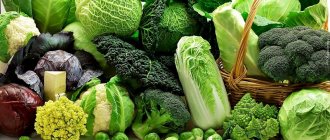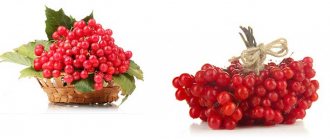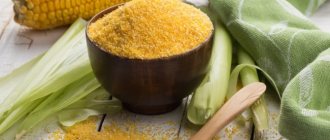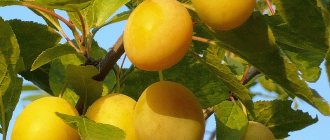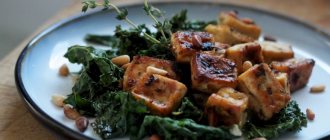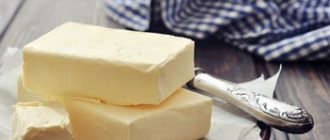More about corn
Corn is an annual plant and its height can reach three meters. It is noteworthy that corn ranks third in importance among grains in the world, after wheat and rice. It grows in the form of cobs with grains.
Corn is a grain. In addition to domesticated corn, this genus includes several wild representatives. Corn is rightfully considered one of the most ancient plants that were domesticated by people. Scientists were able to find out that this grain was first cultivated 8.7 thousand years ago in Mexico.
In modern conditions, the largest producers of this cereal in the world are considered to be:
- America;
- Brazil;
- Mexico;
- South Africa.
Corn loves warmth and light. It is quite resistant to drought conditions, but cannot tolerate shade. The entire period of corn development usually takes from ninety to one hundred and fifty days.
For a very long time, people have called this cereal the queen or queen of the fields. Corn is not too demanding, but there are a couple of prerequisites to get a large harvest. Then all the benefits of corn will manifest themselves to the greatest extent. This is a large amount of water and loosened and fertilized soil.
By the way, manure can be used as fertilizer. It is most often applied in the fall, when the soil is dug up.
Ripe ears of corn
Corn is usually planted at the border between April and May, when cold weather can no longer be expected. After that, all that remains is to wait for ripening. The main sign of corn ripening is the appearance of dried stigmas on the tips of the cobs. They begin to collect it as these signs are noticed. The grains must be soft, and if you press lightly on them, a mealy-colored juice should be released.
What can be cooked from corn: recipes
Maize is a unique product. You can prepare a lot of tasty and healthy dishes from it.
Oven baked corn
We will need:
- corn - 4 cobs;
- butter – 50 g;
- salt – 0.5 teaspoon.
Preparation:
- We clean fresh heads of corn from fibers and leaves.
- Cut the butter into slices.
- Preheat the oven to 220 degrees.
- Rub the cob with oil and salt.
- Place the head of cabbage on foil and wrap tightly.
- Place in the oven for 20 minutes.
- After cooking, let the head of cabbage cool in foil.
Everything is ready, bon appetit!
Corn with tomatoes and rice
We will need:
- canned corn - 1 can;
- tomatoes – 0.5 kg;
- onion – 2 onions;
- rice – 250 g;
- hard cheese – 100 g;
- butter – 80 g;
- parsley, salt and pepper - at the discretion of the hostess.
Preparation:
- Boil the rice. Be sure to salt the water.
- Chop the onion arbitrarily, but finely.
- Cut the tomatoes into cubes.
- We free the corn from the liquid in the jar.
- Grate the cheese. The grater should have large teeth.
- Finely chop the parsley.
- Fry the cooked rice in oil. Add tomatoes there, then onions and pour in corn. Simmer everything over low heat for 7 minutes.
- Season the stewed vegetables with pepper, salt and cheese. Let it simmer for another couple of minutes. Remove from heat and serve, first sprinkling the finished dish with parsley.
Video:
recipe for roasted corn in a spicy creamy sauce Expand
Fish salad with corn
We will need:
- canned beans (white) – 400 g;
- sprats – 150 g (1 can);
- corn (canned) – 170 g (1 can);
- hard cheese – 100 g;
- mayonnaise – 2 tbsp. spoons;
- white bread – 100 g;
- salt - a pinch;
- greens for decoration.
Preparation:
- Cut the bread into cubes, add a little salt and put it in the oven to make crackers. You shouldn’t fry them too much, the main thing is that they are not soft. Crackers can be cooked in the microwave. It will be faster.
- We free the beans and corn from the liquid from the cans.
- We knead the sprats. This can be done with a regular fork. First, you need to drain the oil from the can.
- Chop parsley and other greens, if available. The branches can be left for decoration.
- Cut the cheese into small cubes or grate it. The grater should have large teeth.
- Place the prepared ingredients into a container and mix.
- Add mayonnaise.
Corn, beans and sprats salad is ready! Before serving, you can garnish it with the remaining herbs and add some crackers on top.
Canned Corn Fritters
We will need:
- milk – 50 g;
- flour - half a glass;
- egg – 1 pc.;
- canned corn – 180 g (1 can);
- vegetable oil – 4 tbsp. spoons;
- green onions - 4 feathers;
- parsley, salt and pepper - at the discretion of the hostess.
Preparation:
- In a separate container, beat the egg and add milk. Mix everything and add salt.
- Add flour and knead the dough. The mass should be homogeneous, without lumps.
- We free the corn from the liquid in the jar and add it to the dough.
- Chop the green onions and parsley and add them to the dough. If you wish, you can add a little pepper.
- Heat a frying pan, pour oil.
- We start frying the pancakes on both sides until a crispy crust appears. This way they will look more appetizing.
For many, such a dish will be a real discovery! It is not only very tasty and beautiful, but also healthy! Bon appetit!
Corn with onions and beets
We will need:
- red onion – 100 g;
- garlic – 1 head;
- canned corn – 300 g;
- beets – 300 g;
- vegetable oil – 40 ml;
- salt, pepper and herbs - at the discretion of the hostess.
Preparation:
- Boil the beets for 40 minutes, drain the water and wait until it cools.
- Cut the onion into rings, or half rings.
- Grate or finely chop the garlic.
- As soon as the beets have cooled, peel them and cut them into arbitrary small cubes.
- Chop the greens.
- Mix all the prepared ingredients in a separate container and stir.
- We free the corn from the marinade from the jar and place it in a bowl. Mix again.
- We fill everything with oil. Salt and pepper if desired. Mix. Before serving, the salad can be decorated with herbs.
Video:
recipe for corn with meat in Uzbek Expand
What is corn used for besides food?
Corn grits
The benefits of corn for the health of the body are not all. Not many people know, but besides food, this cereal can be used for many other things.
So, for example, from grains you can make:
- Compound feed;
- Starch;
- Groats;
- Flour;
- Alcohol.
Silage and leaves make excellent feed for farm animals.
And from dried stems and rods we get:
- Paper;
- Viscose;
- Floor coverings and many other similar things.
Corn is grown almost everywhere where there is agriculture. One hectare of soil can produce up to hundreds of centners of crops.
On an industrial scale, fiber is obtained from corn protein; starch is used to create medicines, viscose and glue. The stems and leaves of this plant are used to make packaging and some building materials. And directly from the stalks they produce special raw materials, from which nylon, plastic and other synthetics are then made.
People get this cereal on their dinner table in the form of full-sized cobs, canned food, frozen grains, and so on. We must not forget that in addition to general positive qualities, it also has some healing ones. But first things first.
Description of corn
Let's conduct a brief educational program for those who don't know what corn is. This is an annual plant with a powerful and developed root. In height, the stem of the crop can reach 4 meters, and in width up to 6.5 in diameter. Lanceolate-shaped leaves can reach a length of up to a meter and a width of almost 10 centimeters. The culture has two types of inflorescences - female and male.
The first looks like cobs growing from the axils at the beginning of the leaf, the second looks like the well-known panicles (hairs) located at the top of the stem. They are also called corn silk, the benefits of which for medical purposes are enormous. One plant, as a rule, has two ears, the size of which is up to 50 centimeters in length, up to 10 centimeters in diameter and weighing up to 500 grams. Each cob is covered with a whitish compact layer of sheets in the form of wrappers. The grains of the crop are in the form of small cubes or round cloves; the color can be white, yellow, orange or almost red.
The grains are arranged in vertical rows, and what is noteworthy is that there is always an even number of seeds in one cob. One corn can contain up to 1000 seeds.
What benefits can corn boast?
This is an incredibly valuable cereal. It’s not for nothing that even the ancient Mayan tribes practically deified him. The benefits of corn lie in the general preservation of the health of the body and the fact that it has certain qualities that help a person fight certain diseases.
What is corn actually good for? Let's look at some of the beneficial properties of this cereal:
- glutamine increases the quality of memory, improves metabolic processes in the brain;
- corn grains are useful as a dietary menu for serious illnesses such as gout, epilepsy and liver diseases;
- starch helps form and strengthen muscle tissue, perfectly nourishes neurons;
- corn gently and painlessly, and most importantly, efficiently removes bile, which is very important for diseases of hepatitis or cholecystitis;
- corn is especially recommended for the diet of people suffering from various allergies, as well as obesity and diabetes in various forms;
- young corn is an excellent cleanser of all harmful and unnecessary debris that has accumulated in the body;
- pectins in corn grains prevent the occurrence of various tumors;
- Eating this grain plant will have a great effect on the overall functioning of the gastrointestinal tract and will help get rid of constipation.
Corn gently cleanses the body, completely normalizes the functioning of the digestive system and puts metabolism in order.
If you regularly eat corn, raw or boiled, you can significantly reduce the risk of the occurrence and subsequent development of cancer.
Useful properties of boiled corn
So, what are the benefits of corn? The product contains many different minerals and vitamins, which will be preserved in large quantities after cooking. It is known that regular consumption of the product helps fight stress, strengthens the nervous system, has a beneficial effect on the heart and promotes the active production of red blood cells. It also contains a large amount of vitamin B1; for the daily norm it is enough to eat only 150 grams. cooked product.
Much more can be said about the benefits of delicious boiled corn, but much depends on how correctly such a product is prepared. Healthy, tasty boiled corn can relieve a variety of health problems; its advantage is that no special skills are required for high-quality cooking.
Corn in the field of healing
The benefits of corn
If we talk about treatment, there are many different recipes that are based on corn:
- grains – start metabolism;
- oil – stabilizes cholesterol levels, is used in masks for skin and hair, enriching them with vitamins;
- flour – treats women from infertility, restores male potency;
- decoction - significantly helps in burning fat, recommended for any form of obesity, nutritionists advise drinking a glass per day;
- stigmas - act as a good diuretic.
As you can see, corn is very popular in medicine among the people and is used on a very large scale. This can easily be explained by the fact that corn has a lot of minerals and is rich in vitamins. People have a huge number of different recipes that can relieve a sick person from one or another ailment.
Corn hair contains many beneficial essential oils, as well as pantothenic and ascorbic acids. They are also able to gently and quickly remove bile. Corn grains significantly reduce bilirubin levels. This makes bile less viscous, and also stabilizes the activity of some internal organs as much as possible.
Medicines containing corn help stop bleeding of varying severity. This is due to the fact that the corn content significantly increases blood clotting.
Despite the fact that corn is very, very high in calories, it is loaded with many nutrients. And - such a paradox - it helps people lose weight. And all this can be easily explained by the fact that corn is filling and can suppress the feeling of hunger for a long time.
What are the benefits of sweet corn and what damage can it cause?
When thinking about the health benefits of corn, we usually talk about sweet corn, because that is what people eat most often. And all because it is rich in proteins and carbohydrates. At the same time, there is almost no fat there - there is no more than a percent of it per hundred grams.
Let's look at the main vitamins contained in sweet corn:
- Ascorbic acid – increases the level of immunity, helps fight infectious diseases;
- Iron – takes an active part in hematopoiesis, in the creation of hemoglobin;
- Potassium and sodium - take part in ensuring water-salt metabolism;
- Calcium – strengthens bones, increases resistance to various diseases;
- Magnesium – stabilizes the activity of the cardiovascular and nervous systems, lowers blood pressure, acts as a sedative;
- Copper – helps fight age-related changes from the inside;
- Nickel - like iron, takes a feasible part in hematopoiesis;
- Nicotinic acid – required for stable metabolism, normalization of the cardiovascular and nervous systems, stabilization of cholesterol in the blood;
- Pantothenic acid – increases the level of immunity, stabilizes hormonal levels, returns energy to cells, relieves signs of fatigue;
- Riboflavin - needed to maintain normal synthesis of other amino acids and vitamins;
- Thiamine – restores tone to all body systems;
- Tocopherol is a powerful antioxidant;
- Folic acid – improves mood, normalizes the activity of the cardiovascular system, reduces the risk of the occurrence and development of oncology;
- Phosphorus – enhances the effects of calcium.
Sweet corn is best eaten when the cobs are still young. For starters, at this stage they contain much more useful substances, and they will cook much faster than more mature ones. Young cobs can be eaten raw.
The last argument will especially appeal to adherents of a raw food diet and those who closely monitor their own nutrition and appearance.
Raw sweet corn grains are enriched with tocopherol and ascorbic acid, which, among other things, are also very effective antioxidants. These two elements significantly inhibit age-related changes in the body, tissues are restored faster, and the general condition of internal organs improves.
If you really love sweets, but you don’t have the willpower to give them up completely, nutritionists advise eating raw corn kernels little by little. They lower sugar levels and cleanse a person’s insides of everything bad. Thanks to this, excessive cravings for sweets disappear, as if by magic!
Can pregnant women eat corn?
There is no need to remind you that corn boiled in salted water remains a favorite delicacy for most of us. It’s hard to imagine that a pregnant woman who wants to taste everything that comes her way will bypass this product. And on winter days, it is not without pleasure that we open beautiful jars of canned corn, and dress salads, serve as a side dish for meat, cereals, poultry and fish. But how beneficial is this tasty crop for pregnant women? Can they eat it, and if so, why?
- First of all, corn, as we have already indicated, is an environmentally friendly crop. It does not absorb fertilizers, is not subject to genetic modification and is therefore absolutely safe for consumption by ladies in an interesting position.
- Due to the content of a number of valuable substances, vitamins, corn components take an active part in the formation of the fetus and strengthening the mother’s body.
- Potassium has a calming effect, strengthens the heart and its functioning, and helps a woman overcome bouts of irritability, tearfulness and aggression.
- Magnesium and selenium improve sleep, relieve depression and stress.
- Even if the product undergoes heat treatment, the shell remains intact and cleanses the body of toxins and waste. Also, fiber, along with cleansing the body, burns excess fat and reduces the level of bad cholesterol.
- The starch contained in the product is involved in building muscle mass and forms the nervous system.
- Corn porridges are an integral part of the diet of athletes working in difficult and hazardous industries.
- The presence of pectins helps prevent the development of tumors and inflammatory processes.
- In the fight against toxicosis, it is enough to eat just 1 cob and nausea, vomiting, and dizziness will be eliminated.
- Calcium from the culture is involved in the formation of the baby’s skeleton and strengthening the nerves of the expectant mother.
Important: before you start consuming this tasty and sweet crop, you need to consult a doctor.
- For a pregnant woman, not only boiled corn, but also corn porridge and an infusion of hairs (stigmas) are beneficial.
- The main thing is not to include canned corn in the expectant mother’s diet due to the content of preservatives.
Some interesting facts about corn
The caloric content of corn flour is 331 kilocalories. If you think about wheat flour, its level is only three calories higher. The difference, as you can see, is very small. But for some reason, it is corn flour that is considered dietary, and it is what is recommended to eat for those people who are trying to lose weight. Although, this is probably because the baked goods made from it are much more satisfying, unlike the same wheat. And it eliminates the feeling of hunger for a long time. An additional plus is that corn flour contains much more vegetable proteins.
Corn is the only edible product that contains gold . To eliminate the lack of this valuable metal in the body, it is enough to eat corn porridge just once a month .
Gold has a positive effect on the level of immunity and supports the stable functioning of macrophages. These are special cells that fight not only pathogenic microbes in the body, but also numerous decay products. Thus, the level of body resistance to various external pathologies increases.
The cobs do not collect harmful chemicals from the soil. Therefore, this product is one of the most environmentally friendly. For this reason, you can eat corn raw without any fear of harming your health.
The benefits of boiled corn for weight loss
- Corn has a relatively low calorie content, but high energy value due to incoming carbohydrates (more than 22 grams). It is for this reason that it is easily absorbed by the body and is not deposited in problem areas.
- The sugar content allows you to feel good throughout the diet. Low blood pressure and malaise are excluded. The heart is not under stress.
- To increase metabolism, it is enough to include 1-2 ears (100, 200 Kcal, respectively) of boiled cereal in the daily menu. It is preferable to consume corn before 2 p.m.
- Experienced nutritionists recommend leaning on boiled corn on fasting days. In this simple way you will cleanse your intestines and prevent constipation.
- To reap the full benefits, follow the corn diet for a month, then take a week off. When consuming, chew slowly; you can add grains to salads, first and second courses.
For what problems is it recommended to eat corn?
Let’s look at what diseases it is recommended to consume corn:
- pregnant women and mothers who have recently given birth;
- if there are difficulties with metabolism;
- if there are cholesterol plaques;
- if the nervous system is unstable;
- if vision deteriorates. (Carotenoids in corn grains help the eye lens to recover. Additionally, scabies or painful pain in the eyes stop).
Please note that nursing mothers are strictly prohibited from eating more than one single cob per day. Otherwise, the baby may develop colic.
Corn is enriched with selenium. This element will help quickly cleanse the liver and also help eliminate the effects of poisoning. Strengthens muscles. The starch in corn grains is very useful for athletes - it helps to recover faster after intense training.
Corn during pregnancy
Corn is also beneficial for pregnant women. Its use helps to cope with increased stress during pregnancy and gives strength. If a woman suffers from edema, then a decoction of grains is suitable for decongestant compresses, which are done 2-3 times a day.
We recommend reading: What are the benefits of turnips for the body, properties and contraindications
For frequent leg cramps, corn grain is also useful. It contains a record calcium content, the lack of which causes changes in well-being. It is especially useful to eat cobs in the 3rd trimester of pregnancy, when the baby’s skeleton is growing rapidly.
Corn silk: what is it treated for and what are the limitations?
Corn silks are the “hairs” around the cob. If we talk about their medicinal qualities, they are even ahead of grains. Moreover, stigmas are widely used in official medicine. They cleanse the insides, strengthen the immune system and have a calming effect on the nervous system.
Doctors often prescribe oils and medications made from these stigmas for the following diagnoses:
- Hepatitis;
- Diabetes;
- Bladder stones;
- Uterine bleeding of varying severity;
- Disruption of the bile ducts;
- Violation of metabolic processes;
- Obesity;
- Swelling of the extremities;
- Pancreatitis;
- Sexual disorders;
- Prevention of oncology;
- Cholecystitis;
- Cirrhosis of the liver;
- Cystitis.
Before you start taking corn silk yourself, it is important to consult with your doctor. Under no circumstances should you exceed the dosage prescribed by a specialist or prescribed in the instructions.
Between courses it is required to take certain breaks. Otherwise, the body did not begin to get used to the effects and the treatment did not lose effectiveness.
The easiest way to benefit from corn silk is when it is cooked. In other words, the easiest way is to cook them together with the cobs.
Harm of corn
This cereal is strictly forbidden to be eaten by people who suffer from:
- Varicose veins;
- Exhaustion;
- Acute stomach or intestinal ulcer;
- Thrombosis;
- Thrombophlebitis;
It is not recommended to eat it for those who have excessively high blood clotting. The fact is that corn contains vitamin K - it can seriously aggravate the process.
Please note that it is also strongly advised not to eat corn for people who, in principle, suffer from frequent disturbances of appetite or who individually cannot tolerate corn.
Boiled corn: health benefits and harms
The benefit of boiled corn lies mainly in the fact that it does not take long to cook, but even after heat treatment it retains almost all the useful things that our body needs. Perhaps, except for vitamin C. And all thanks to the fact that the dense shell of the grains prevents the vitamins from being washed out during the cooking process.
As was already mentioned a little above, boiled corn is much higher in calories than raw corn. But that's not all that's worth mentioning. Sometimes, the benefits of boiled corn are also many times greater than those that have not undergone heat treatment.
Cobs contain the amino acid L-tryptophan. It is responsible for overall positive mood and sleep control. If a person suffers from insomnia, it is recommended to eat half a glass of boiled grains three hours before bedtime.
It will be much more effective to eliminate constipation if you eat boiled corn. The effect of the grains can be enhanced significantly if the cob is poured with corn oil.
Among other things, it is grains that have undergone heat treatment that are much easier to process by our digestive system. This is partly why they are called dietary.
Raw grains, although healthy, are still much harder for the stomach. To the point that they can cause diarrhea.
How to cook corn
Corn cobs can be cooked in either a saucepan or a slow cooker. The main thing is to choose them correctly. The cobs should be taken with light grains (this is milky ripeness), with juicy leaves. If they are a little dry, this indicates that the cobs were picked a long time ago. If you want to make them juicier, you can add a little sugar to the water.
In a saucepan
The cobs are washed, the outer leaves are removed and soaked for a couple of hours in water to make the grains softer. You need to cook them without adding salt, it just adds rigidity. After soaking, young corn is cooked for literally 20 minutes. Overripe cereal takes a long time to cook – almost 2 hours. Readiness can only be determined by taking a sample - if the grain has become soft, you can turn off the gas. After this, the pan is removed from the stove, the water is poured out of it, covered with a lid and wrapped in a terry towel so that the cobs reach the desired condition and the grains become more tender.
In a slow cooker
Corn cobs are prepared in the same way as described above. Water is poured into the multicooker to the maximum level. Then put the cobs in a bowl, cover them with the top leaves, set the high temperature mode and turn on the device for 15 minutes.
In a pressure cooker
Remove the top leaves from the cobs and wash them thoroughly in running water. The more tender leaves and stigmas that are adjacent to the grains themselves are also washed and placed on the bottom of the pressure cooker.
The cobs cleaned in this way are laid on top of the hairs and leaves and filled with a small amount of water. Do not add salt until it boils so that the grains do not become hard. The device is set to the appropriate mode and turned on for 10–20 minutes. The cooking time depends on the corn itself. If we are talking about young cobs, then 8–10 minutes is enough. This applies to appliances such as a multicooker-pressure cooker. If we are talking about an ordinary pressure cooker, which is placed on the stove, then boiling water is poured into it so that it completely covers the cobs. The cooking time for milk-ripe corn is the same 8–10 minutes after boiling.
Video:
how to cook corn so it’s delicious Expand
Canned corn: its benefits and harm to the body
It is known that certain vegetables lose their vitamin qualities after pickling. But the same cannot be said about corn. Interestingly, there is even a special diet based on canned corn. According to rumors, you can lose up to five kilos in seven days. Why canned? It has slightly fewer calories than boiled one, and it is much easier for the stomach to digest.
Among other things, pickled grains are perfect for sports nutrition. Concentrated starch will help increase and strengthen muscles.
Yes, during conservation, grains lose a certain part of their usefulness, but they contain much more sodium, which, like potassium, contributes to a stable water-salt metabolic process.
How to identify good canned food
Pay attention to the quality of the corn. It can be determined by its composition. If the canned food contains citric acid or sugar, this means that the manufacturer used overripe corn or even feed varieties that are not at all recommended for consumption!
Acid and sugar, in this case, are used as flavor enhancers. Normal cobs and table varieties do not need this at all . High-quality canned food should ideally consist only of corn, salt and water. And the number of carbohydrates, preferably, should not exceed 12 grams.
The months of manufacture also matter. If the month is summer, everything is fine, the corn was fresh. If it was winter, canned food was prepared from dried and reconstituted grains.
Please note that when checking the date of manufacture, you can only trust the numbers indicated on the lid of the jar. After all, a paper label can always be replaced with a new one. It is best to purchase canned corn in a glass jar rather than a tin. This way it will be possible to assess in advance the quality of the grains and the marinade, which, by the way, should be mealy in color.
If the canned food is in a tin, you need to shake it. If you hear a splash, return the corn to the shelf. It looks like the marinade was not poured all the way to the top. If the metal comes into contact with air that remains in the void, oxidation occurs and toxins that are hazardous to health are released into the marinade. In addition, the tin can must be undamaged.
How to select and store corn
So that the store can’t deceive you and “slip” you with feed corn instead of food, you need to know a few selection rules.
- Form.
Remember that the forage cob will be much longer. If you see an oblong shape larger than 15 cm, then you should not pay attention to it. Just pass by. Of course, it is also suitable for eating, but it will have to be cooked for a long time, and the result will be a not very tasty product. It will not be sweet and juicy. Choose cobs no more than 15 cm long. Juicy sugar maize looks like a barrel. This is the kind of cob that will turn out aromatic, rich and juicy after cooking. - Grains.
The forage crop has grains of bright color, sometimes even orange. We need to choose grains that are pale yellow in color. If possible, you can pick out one grain and taste it. Fresh edible maize will be juicy and sweet, while feed grains will taste like grass. - Ripeness.
This is an important detail. Ripe corn has an ear where the kernels fit tightly together. They should be elastic. Grains that have lost their juice will have depressions, and their skin will resemble wax.
Choose cobs whose kernels are firm, without dents, pale yellow in color, and fit tightly together. Then you definitely can’t go wrong and buy ripe, juicy sweet corn!
Storage
Maize can be stored in different ways. The timing will depend on this. The cob can be frozen, canned, dried, or left fresh and stored in the refrigerator. You can separate the grains, place them in a special container and store them that way. The hostess herself chooses which option suits her best. The shelf life of the cob in the refrigerator is no more than 3 weeks. Sweet, fresh varieties will keep best.
The product preserved in a glass jar lasts the longest. Duration – 3 years. If we talk about preservation in a metal can, then the period is no more than 2 years.
Is it possible to freeze
You can freeze maize, and in the freezer the shelf life will increase to one year. To do this, it is best to cut the grains and place them in a bag or container.
Important!
To ensure that corn in the freezer does not lose its taste, it must be properly prepared.
To begin with, the cob should be thoroughly cleaned of fibers, the leaves should be removed, and damaged grains should be removed. Cut off the tip of the head of cabbage. Then rinse with water. Prepare a container with cold water and add ice there. Pour water into another container and bring to boil.
First, immerse the cob in boiling water for 2 minutes and immediately transfer it to a container with ice water. Repeat this 4 times. Then lay out the heads of cabbage to dry on paper towels. After drying, wrap the heads of cabbage in film and place in the freezer.
In the same way, grains are prepared for storage in the freezer.
Video:
how to choose corn so that it is juicy and tasty Expand
Vitamins
| Vitamins | Quantity | Norm |
| Vitamin A | 53 mcg | 900 mcg |
| beta carotene | 0.32 mg | 5 mg |
| Vitamin B1 | 0.38 mg | 1.5 mg |
| Vitamin B2 | 0.14 mg | 1.8 mg |
| Vitamin B4 | 71 mg | 500 mg |
| Vitamin B5 | 0.6 mg | 5 mg |
| Vitamin B6 | 0.48 mg | 2 mg |
| Vitamin B9 | 26 mcg | 400 mcg |
| Vitamin E | 1.3 mg | 15 mg |
| Vitamin H | 21 mcg | 50 mcg |
| Vitamin PP | 3.2 mg | 20 mg |

